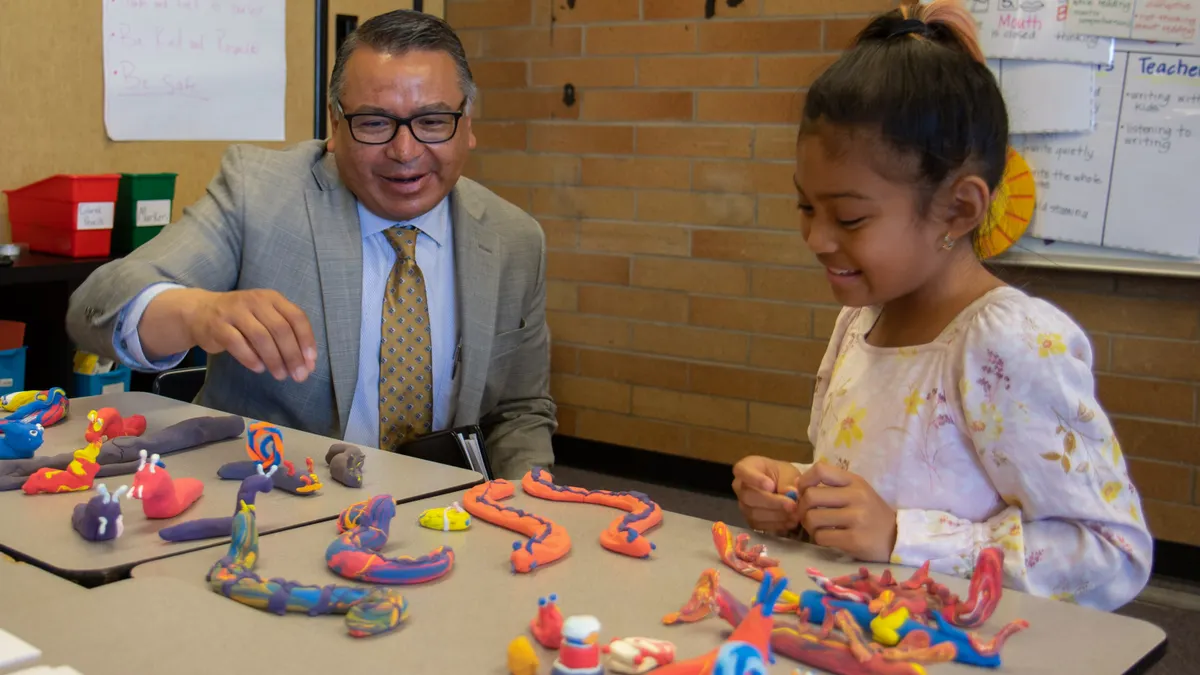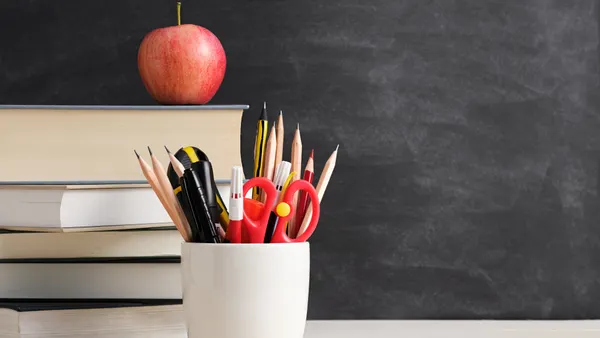“So you’re the new principal, right? You’ll be gone by the end of the year.”
This was the welcome Kevin Sotomayor received from a pair of 6th-grade girls four years ago when he took the reins of Isaac Middle School in Phoenix. His playful response to the duo, who he was speaking with during a break? “Nobody tells me when to leave. I will leave when I'm good and ready.”
Before his arrival, many of Isaac Middle School’s roughly 600 students — 94% of whom are Hispanic, 87% economically disadvantaged, and one-third English learners — referred to staff and faculty simply as “Mister” or “Miss” rather than their names. That was because, Sotomayor recalls students telling him, “Why bother learning names? People are just gonna leave.”
The building had a reputation as a “fight school” and was nearing an F grade from the state. At one point, students had even set a sports field on fire.
“That abandonment was real,” Sotomayor says. “And it was tough that first year where, again, half the staff had left.”
But the situation also presented the new principal with a clear mission to rebuild school culture with a focus on presence and intention.
“The kids really needed to see that we were gonna be here, that we did care,” Sotomayor says.

To Isaac School District No. 5 Superintendent Mario Ventura, Sotomayor’s passion and willingness to go above and beyond for students are where he truly excels. And he’s not shy about ensuring that everyone knows their role in raising achievement and improving the culture, Ventura says.
“Kevin brought in high expectations for everyone: The students. The teachers. The parents. Himself,” says Ventura. “And he said, ‘Here's the plan. Here's how we're gonna do things here.’”
Lifting everyone’s voice
Today, Isaac is a “B” school. Discipline referral rates are down. Student demand has driven the addition of arts programming, including dance, and a full transition to an arts academy is in consideration.
But to reach that point, Sotomayor started with staff, asking everyone on his team to think really hard about why they entered the teaching profession and what they want their legacy to be. He had teachers write up their responses, and then had them printed and framed so educators could keep their responses in view to remember throughout the day.
“We just really started to attack the mindset of the staff, not the students. That belief — I like to call it the pobrecito [Spanish for 'poor thing'] syndrome,” Sotomayor says. Before his tenure, he said, staff had a mindset that students’ adverse backgrounds prevented them from being able to succeed.
“We know all of this. Now, what? Let's move forward,” Sotomayor says. “These kids are smart. They are absolutely incredible. What do we need to do?”
That shift in outlook was a crucial step in helping the student body embrace a positive mindset, one that goes beyond what Sotomayor summarizes as: “This is who we are, we're all about fights, we just kind of gave up, and we accept what it is.”
Special education teacher Kristen Jahrman describes the school prior to Sotomayor as “kind of chaotic” and lacking strong leadership. Now, however, she praises the principal’s big-picture mentality and his ability to recognize those who are leaders and place them where they need to be.
Using a positive behavioral interventions and supports approach, the school’s disciplinary practice is centered more on recognizing and addressing the cause of negative behaviors while highlighting and celebrating good behaviors and successes, says Assistant Principal Alicia Clynick.

The focus on building a more positive culture began, however, with faculty. In addition to thinking strategically about hiring and placement, Sotomayor opened meetings with celebrations as a way to ensure faculty and staff feel supported.
Staff culture ‘trickles down to students’
Clynick, who has worked at Isaac Middle for three of Sotomayor's four years there, says this approach helped to improve staff camaraderie and engagement while reducing cliques that had formed amid the school’s previous culture.
“We have whole events called ‘Days of Joy’ where staff just celebrate together and just have that time to come together,” Clynick says. “And I know that our staff are very open to one another and he really helped establish that.”
That positivity and engagement ultimately trickles down to students, Clynick says, citing a correlation between improvements in staff culture and a decline in student behavioral concerns.
“One thing I definitely have noticed — even starting with the first year I was here until now — the discipline rates have drastically decreased, even from last year to this year,” Clynick says. “He helped put together different structures for the students to be able to build relationships with their teachers and their administrators.”
There’s an open-door policy for students to get assistance or voice their concerns.

De-escalation strategies are prioritized over more punitive and escalatory approaches to discipline. Students can share their perspectives on elective programming via surveys. Half of the staff is bilingual, and many — like Sotomayor — are originally from the community.
For Sotomayor, all of these improvements can be summed up with three words: presence, expectations and belief. But he says he’d also be remiss if he didn’t give credit to his entire team.
“I take great pride in the folks that I hire, and then I try my best to let them do the job that I hired them to do,” Sotomayor says. “I take a lot of ownership in what I do, but I’ve got great people that I work with and have a lot of support from the district level in the vision that I have moving forward.”


















